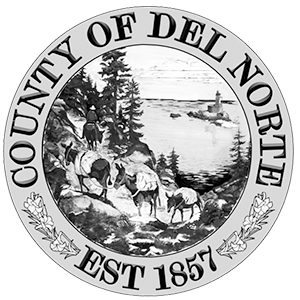Weed Management and Eradication
The Department’s Weed Management and Eradication programs involve looking for and controlling invasive and noxious weeds along county roadsides and wildlands, with the highest priority being given to A-rated weeds as defined by the California Department of Food and Agriculture.
Is it a noxious weed, invasive weed, or both?
The term "weed" means different things to different people. In the broadest sense, it is any plant growing where it is not wanted. Weeds can be native or non-native, invasive or non-invasive, and noxious or not noxious. A noxious weed is a plant that has been defined as a pest by law or regulation and is particularly injurious to public health, agriculture, recreation, wildlife, or property. A noxious weed is also commonly defined as a plant that grows out of place and is "competitive, persistent, and pernicious." (James, et al, 1991).
An invasive weed is a plant that is both non-native and able to establish at many sites, grow quickly, and spread to the point of disrupting plant communities or ecosystems, as they have no natural enemies to limit their reproduction and spread. Some invasive plants can cause significant changes to native vegetation, composition, structure, or ecosystem function (Cronk and Fuller, 1995). Many invasive weeds have therefore been classified as noxious weeds by federal, state, and county governments.
You Can Help Limit the Spread of Weed Pests
Preventing the introduction and spread of invasive weeds is up to all of us. Ways in which you can help be a part of the solution is to not plant plants that are known to be invasive, remove invasives growing on your property, or get involved with a local group that does weed removal in wild lands.
Tips for Removing Invasive Weeds
Pull plants in spring or fall when the soil is moist but still crumbles. This will allow you to dig in deeper and help to separate the roots from the dirt, leaving the soil behind when you remove the plants. Try to remove the entire root ball, as some plants are able to regenerate from small root fragments.
Attempt to remove plants before they go to seed. Do not compost plants as most compost piles do not get hot enough to sterilize seeds. Disposal of plant waste at the transfer station is recommended, burning can also be effective but it’s recommended that you do not burn toxic plants as the fumes can be hazardous to health. Note: When disposing of noxious weeds at the transfer station, place them in the general waste area and not the green waste area as green waste is recycled back into the environment and will cause seeds to be distributed to other areas.
Resources
Local Organizations with Volunteer Opportunities
Tolowa Dune Stewards: https://www.facebook.com/tolowadunesstewards/
Redwood National and State Parks: https://www.nps.gov/redw/getinvolved/volunteer.htm
Rock Creek Ranch: http://rockcreekranch.smithriveralliance.org/
Native and Invasive Plant Information
Invasive Plants of Del Norte County (PDF)
Yellow Starthistle Brochure (PDF)
Dalmatian Toadflax Brochure (PDF)
Rush Skeletonweed Brochure (PDF)
Don’t Plant a Pest Brochure (PDF)
California wild plant observations: Calflora.org
CDFA weed ratings: https://www.cdfa.ca.gov/plant/IPC/encycloweedia/winfo_weedratings.html
Guide to Invasive Weeds of Humboldt County
Invasive weeds of California: https://www.cal-ipc.org/
Native Plants of the Pacific Northwest
Tansy Ragwort - A Noxious Weed
Tansy is toxic and a threat to livestock and agriculture. It spreads rapidly and takes over pastureland, squeezing out grasses and native plants.
Tansy is the only weed addressed by a Del Norte County ordinance. It prohibits persons from allowing tansy ragwort to flower on their property within 150 feet of property lines which border those that are either free of tansy or are being controlled for tansy. See the link in the Resources section below for full text of the ordinance.
Resources
Del Norte County's Tansy Control Ordinance
More information about Senecio jacobaea and its control methods can be found at the following link: https://www.cdfa.ca.gov/plant/ipc/encycloweedia/weedinfo/senecio.htm

